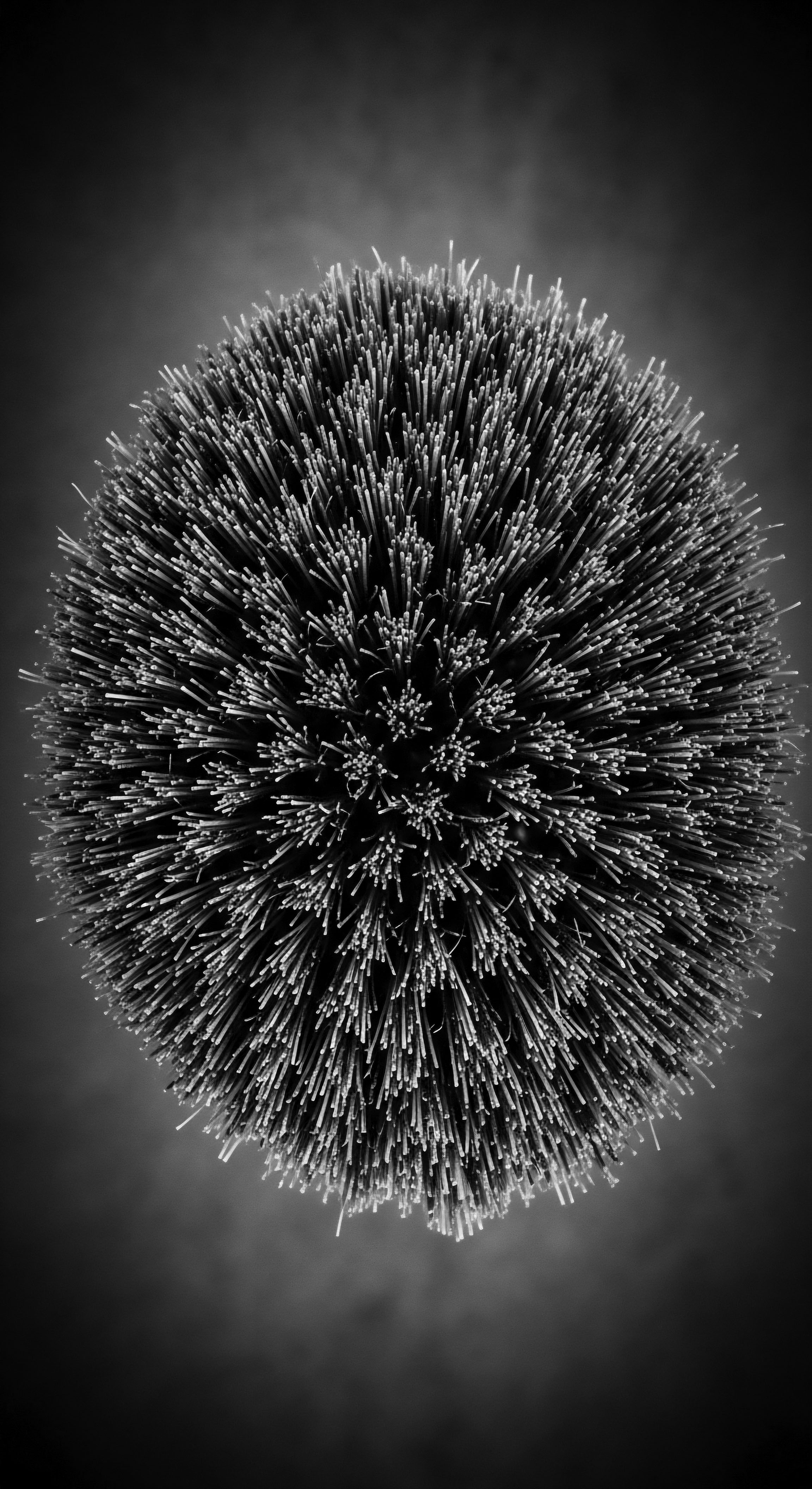
Fundamentals
The concept of Coily Hair Moisture stands as a foundational pillar within Roothea’s ‘living library,’ a designation recognizing its deep, elemental connection to the very vitality of highly textured strands. At its most straightforward interpretation, this term denotes the intrinsic capacity of coily hair to hold and maintain its vital water content. This capacity, rather than being a mere superficial attribute, is an animating force, dictating the suppleness, resilience, and overall health of each individual helix. For those whose ancestral lines flow through the intricate patterns of coily hair, understanding this moisture equilibrium is not simply a matter of cosmetic preference; it is a profound engagement with a legacy of care and preservation.
From the earliest whispers of hair wisdom, passed from elder to kin, the need to hydrate and safeguard coily textures was an intuitive knowing. This early understanding, though not articulated in the lexicon of modern science, nonetheless centered on observing hair’s responsiveness to water and natural emollients. When strands felt brittle, when their spring seemed diminished, or when their luster dimmed, ancestral hands reached for the earth’s bounties.
These were the initial, unspoken definitions of moisture’s presence or absence, gleaned from generations of tactile experience. The hair’s appearance and sensation offered a direct language of its needs, a testament to the intimate bond between humans and their environment.
Coily Hair Moisture is the lifeblood of textured strands, a testament to ancestral knowledge and continuous care.
This foundational understanding acknowledges the unique structural composition of coily hair. Unlike straighter hair types, which present a more uniform, circular cross-section, coily strands possess an elliptical or flattened shape. This distinct morphology, coupled with the frequent twists and turns along the hair shaft, inherently creates more points of vulnerability for water to escape. Each bend in the coil represents a potential lift in the cuticle layers, those delicate, overlapping scales that serve as the hair’s protective outer shield.
When these cuticles are raised, moisture readily evaporates, leading to dryness, fragility, and a diminished capacity for flexibility. Thus, the inherent challenge of maintaining adequate moisture in coily hair became a central focus of traditional hair care practices, evolving into sophisticated rituals designed to counteract these natural tendencies.
The recognition of this moisture imperative guided the selection of natural ingredients and the development of specific care techniques. Ancient communities understood that certain plant-derived butters and oils, rich in fatty acids and occlusive properties, could form a protective barrier, effectively sealing in the hydration that water alone provided. They observed that communal styling sessions, involving careful detangling and braiding, not only reinforced social bonds but also minimized exposure to environmental elements, further aiding in moisture retention. This symbiotic relationship between biological necessity and cultural practice forged the earliest expressions of coily hair moisture management.
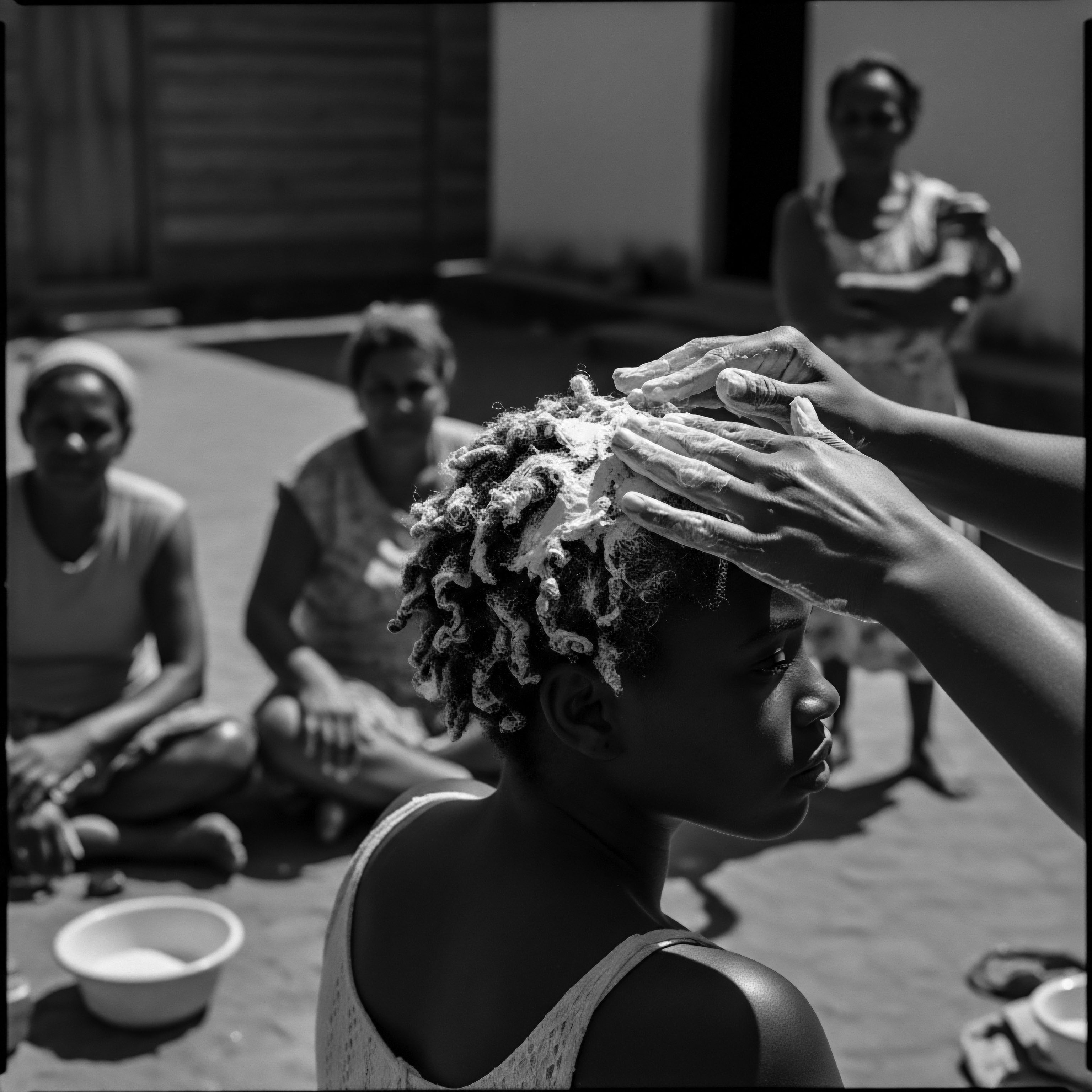
The Elemental Connection ❉ Water and Earth’s Gifts
The primary source of moisture for any hair type remains water. For coily hair, however, the manner of its application and subsequent retention assumes paramount importance. Traditional wisdom understood that direct water application, often in the form of rinses or mists, served as the initial step.
Following this, the careful layering of botanical extracts and natural lipids became the next essential phase. This sequence, intuitively practiced, mirrors modern scientific understanding of humectants (substances that draw water from the air) and emollients (substances that soften and smooth) working in concert with occlusives (substances that create a barrier to prevent moisture loss).
- Shea Butter ❉ Derived from the nuts of the African shea tree, this rich butter has been a cornerstone of West African hair care for centuries. Its emollient properties provide a substantial shield against moisture evaporation.
- Coconut Oil ❉ Valued across many tropical regions, this oil’s unique molecular structure allows it to penetrate the hair shaft, offering deep conditioning while also sealing the cuticle.
- Aloe Vera ❉ A succulent plant yielding a clear gel, aloe vera is revered for its hydrating and soothing qualities, providing a light, refreshing layer of moisture.
These plant-based allies, passed down through generations, form the core of the fundamental understanding of Coily Hair Moisture. Their efficacy was not theorized in laboratories but proven through countless cycles of care, demonstrating their profound ability to keep coily strands soft, pliable, and resistant to breakage. This deep practical knowledge, honed over millennia, remains a testament to the ingenuity and resourcefulness of ancestral communities in nurturing their textured heritage.
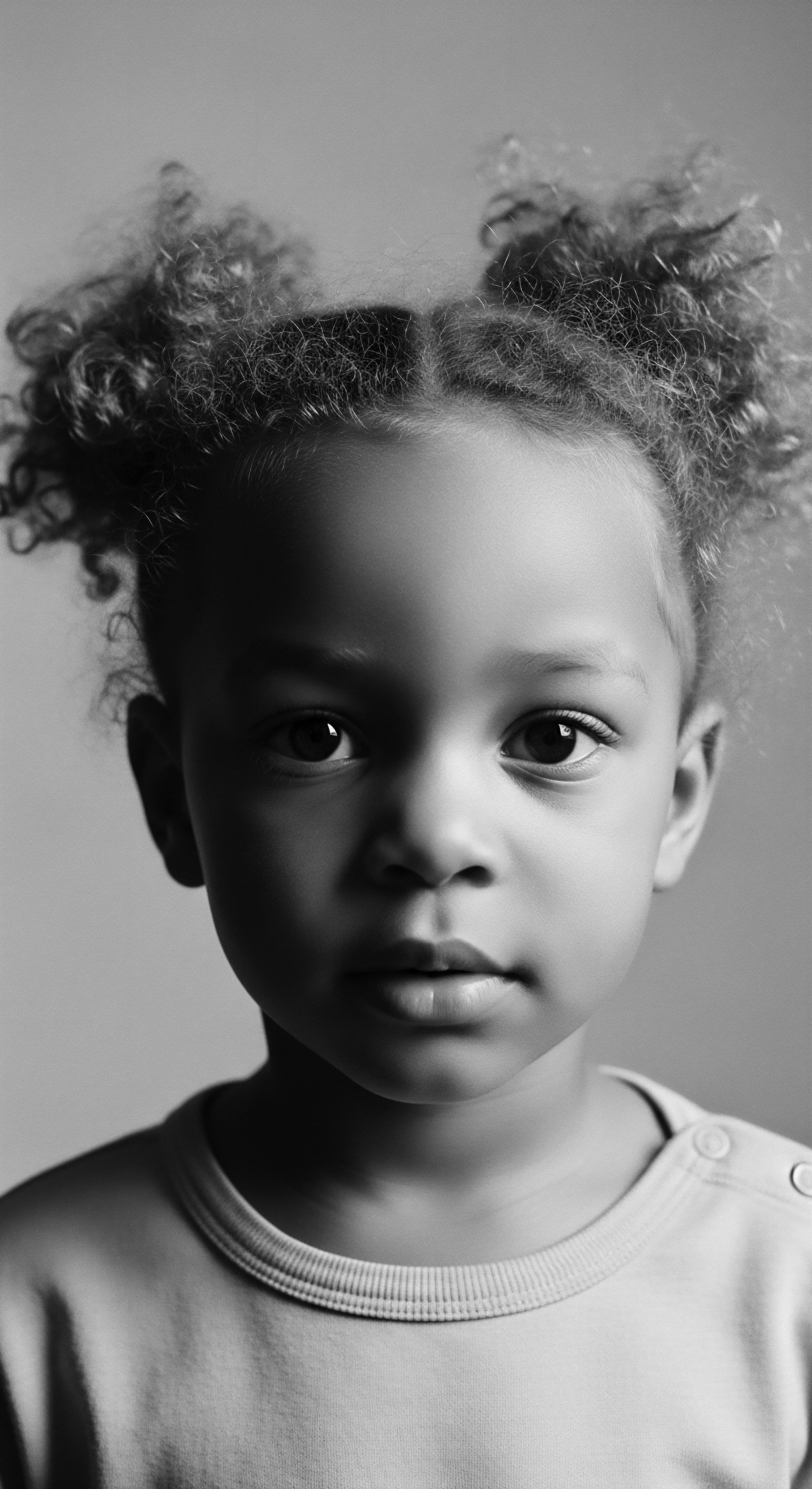
Intermediate
Moving beyond the foundational tenets, an intermediate exploration of Coily Hair Moisture delves into the nuanced interplay of environmental factors, historical practices, and the evolving identity of textured hair. This deeper understanding recognizes that moisture is not a static state but a dynamic balance, constantly influenced by the climate, styling choices, and the very journey of a strand through time. The traditions that emerged across the African diaspora represent sophisticated responses to these challenges, often blending communal ritual with practical ingenuity to preserve hair health and cultural expression.
The historical imperative to maintain moisture in coily hair was often intensified by forced migrations and new environments. In the searing heat of certain African regions, or the humid climes of the Caribbean, distinct methods for moisture preservation took root. Later, in the colder, drier air of North America or Europe, the ingenuity of diasporic communities adapted these ancestral practices, recognizing the hair’s constant thirst for hydration. This adaptive spirit underscores the resilience inherent in textured hair heritage, where care rituals became acts of self-preservation and cultural continuity.
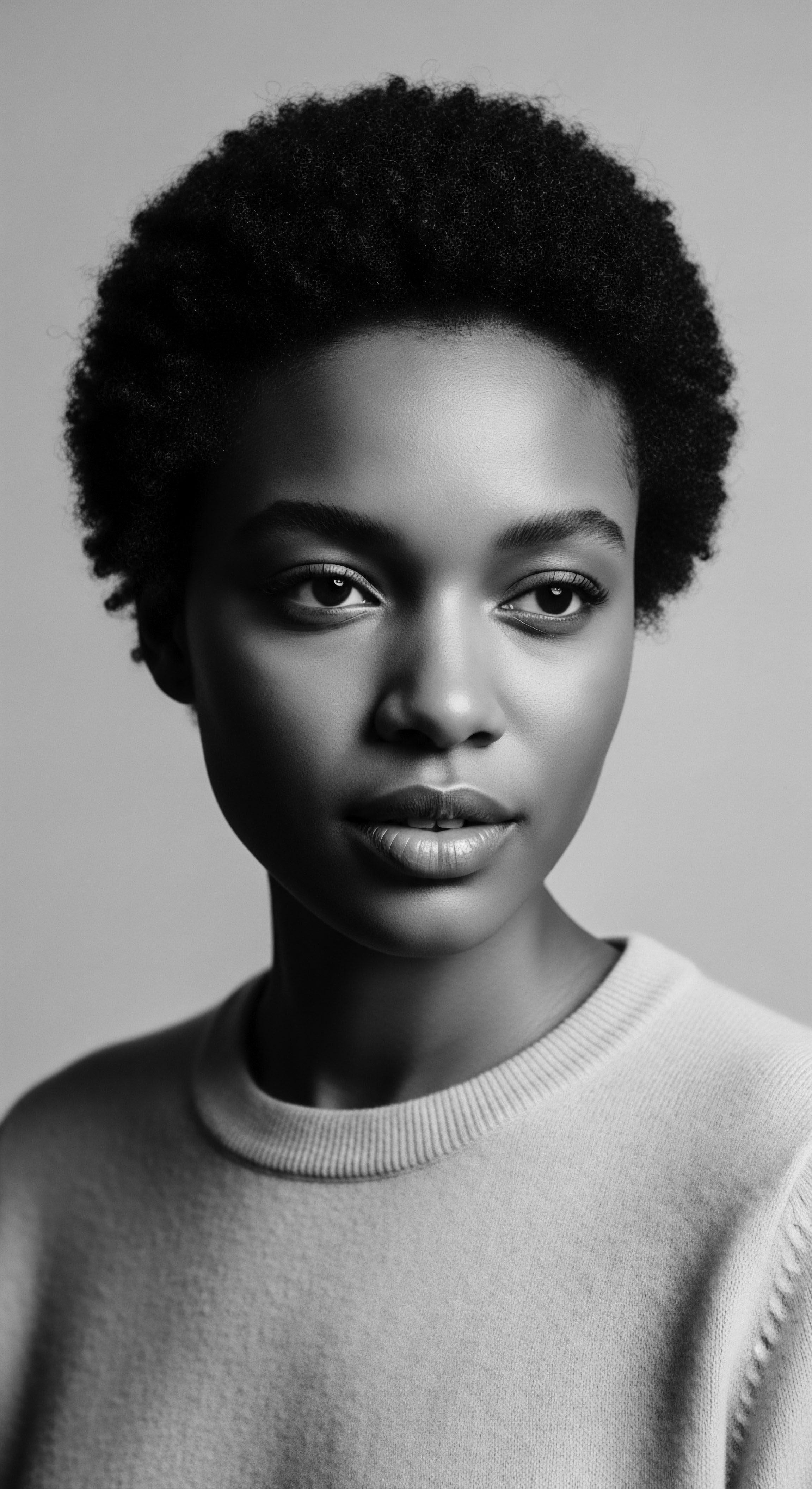
The Tender Thread ❉ Living Traditions of Care
Generations of caregiving hands have woven a rich tapestry of practices around Coily Hair Moisture. These traditions often involved a methodical approach to hydrating and sealing, reflecting an intuitive understanding of the hair’s porous nature. The famed “LOC” or “LCO” methods, while codified in contemporary natural hair discourse, echo these ancient layered applications ❉
- Liquid ❉ The initial introduction of water or a water-based product, often infused with herbal extracts, to hydrate the hair shaft. This step awakens the coil and prepares it for further nourishment.
- Oil ❉ A subsequent application of a natural oil, chosen for its penetrating or sealing properties, to help replenish the hair’s lipid content and provide a barrier.
- Cream ❉ The final layer, a richer butter or cream, to further seal in the moisture and provide lasting softness and definition.
This systematic layering, whether consciously named or instinctively applied, speaks to a deep, experiential knowledge of how to optimize moisture retention. It represents a continuous conversation between the hair and its caretaker, a responsive ritual ensuring the strands remain supple and vibrant.
Ancestral layering techniques, like the LOC method, embody a timeless wisdom for retaining moisture in coily hair.
Beyond product application, protective styling has always played a significant role in managing Coily Hair Moisture. Styles such as braids, twists, and cornrows, which have roots stretching back millennia across African civilizations, serve a dual purpose ❉ they are expressions of artistry and identity, yet they also shield the delicate hair strands from environmental stressors. By minimizing exposure to sun, wind, and friction, these styles allow the hair to retain its hydration for longer periods, reducing breakage and promoting length retention. The act of creating these styles often became a communal event, fostering intergenerational bonds and transmitting knowledge of care from elder to youth.
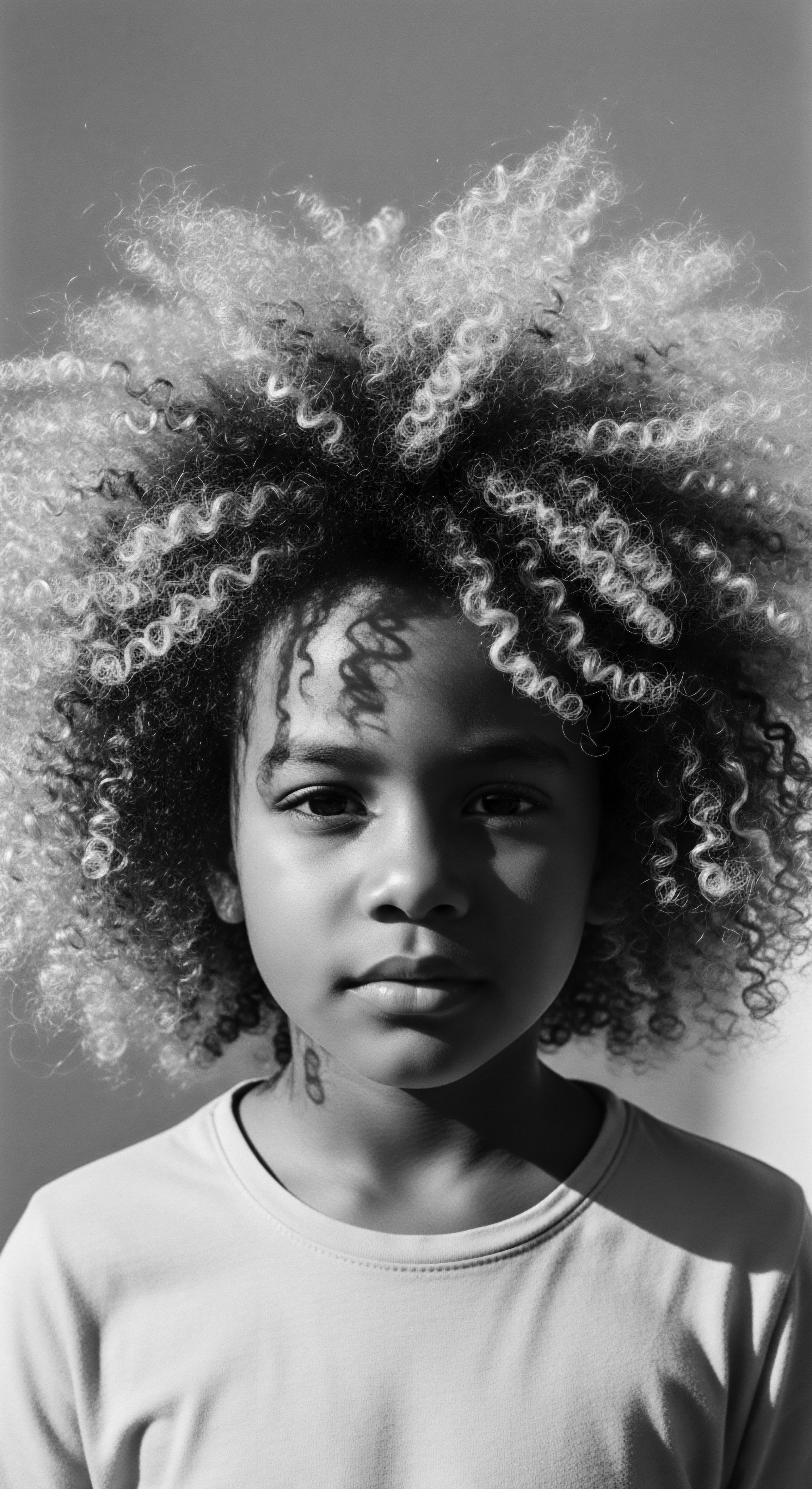
Communal Wisdom and Adaptation
The shared experience of nurturing coily hair fostered a communal understanding of moisture. In many African and diasporic communities, hair care was not an isolated act but a social ritual. Women would gather, sharing techniques, ingredients, and stories while tending to one another’s hair.
This collective wisdom reinforced the importance of consistent hydration and gentle handling. The very act of detangling, often a delicate process for coily textures, became a lesson in patience and mindful attention, reinforcing the value placed on each strand.
| Aspect of Care Hydration Source |
| Traditional Approach (Echoes from the Source) Rainwater, infused herbal rinses, natural spring water. |
| Modern Understanding (Tender Thread) Filtered water, hydrating sprays, leave-in conditioners with humectants. |
| Aspect of Care Emollients/Sealants |
| Traditional Approach (Echoes from the Source) Shea butter, cocoa butter, palm oil, plant-derived oils (e.g. moringa, baobab). |
| Modern Understanding (Tender Thread) Botanical oils, creams with ceramides, fatty alcohols, and synthetic emollients. |
| Aspect of Care Protective Measures |
| Traditional Approach (Echoes from the Source) Braids, twists, headwraps, sleeping on natural fibers like cotton (less ideal for moisture). |
| Modern Understanding (Tender Thread) Braids, twists, satin/silk bonnets and pillowcases, low-manipulation styles. |
| Aspect of Care The enduring objective remains consistent ❉ to preserve the vital water content of coily hair for its health and vibrant expression. |
The introduction of new materials, such as satin and silk for bonnets and pillowcases, represents a modern adaptation that aligns perfectly with ancestral aims. While traditional headwraps offered protection, their materials could sometimes absorb moisture from the hair. The smooth surface of silk or satin minimizes friction, thereby reducing breakage, and crucially, allows the hair to retain its natural oils and applied moisture throughout the night. This adaptation is a testament to the ongoing evolution of care, always rooted in the fundamental goal of nurturing Coily Hair Moisture.
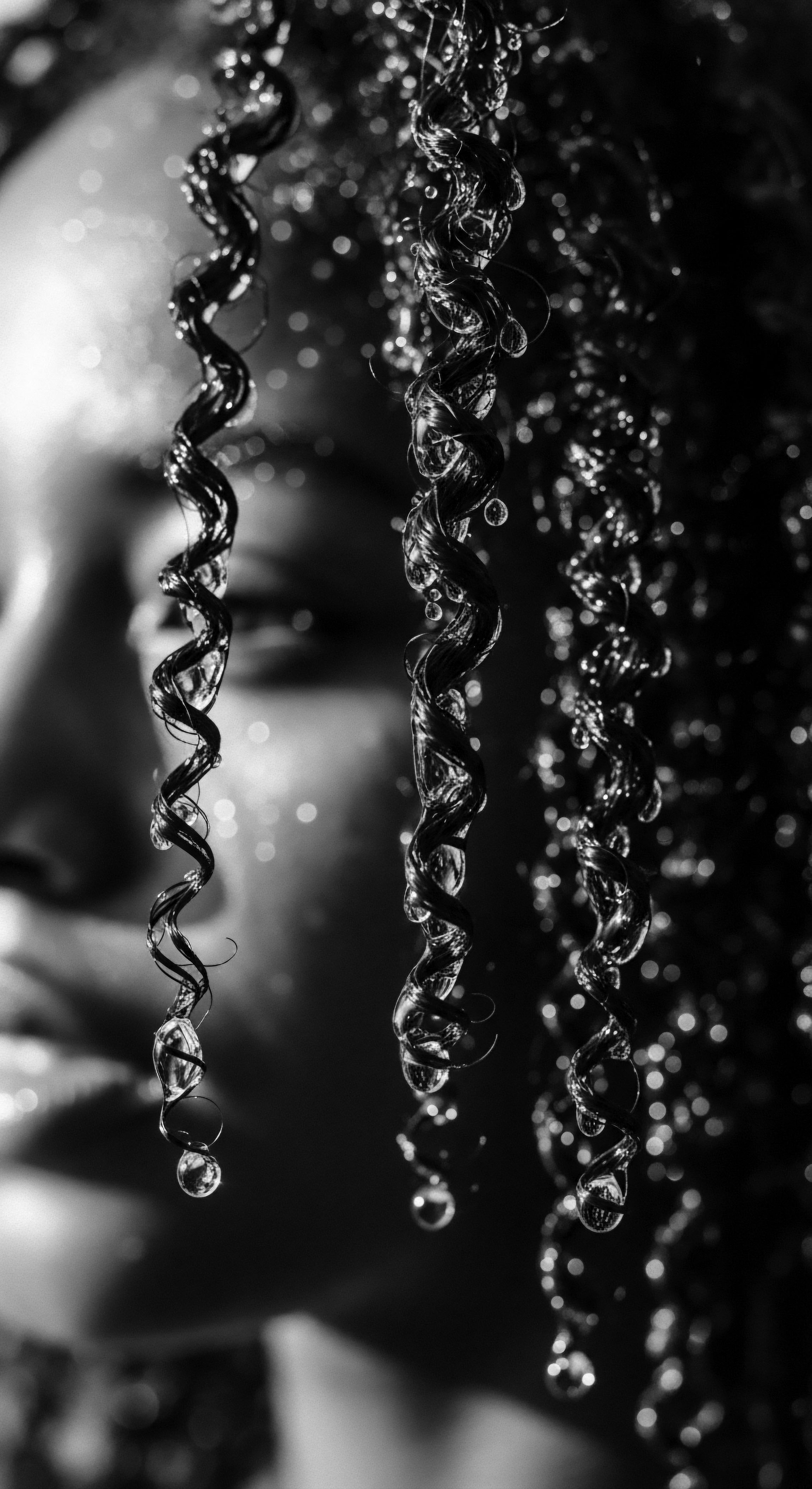
Academic
The academic elucidation of Coily Hair Moisture transcends a mere surface-level description, delving into the intricate biomechanical realities of highly textured strands and their profound implications for historical and contemporary hair care practices. This definition, viewed through the lens of Roothea’s comprehensive ‘living library,’ positions Coily Hair Moisture not as a singular phenomenon but as a complex interplay of molecular structure, environmental dynamics, and deep cultural heritage. Its meaning is a confluence of scientific inquiry and the lived experiences of Black and mixed-race communities across the globe.
At its core, Coily Hair Moisture refers to the critical water content necessary to maintain the structural integrity, elasticity, and overall health of hair fibers characterized by their tight, helical curl patterns. These strands, often possessing an elliptical or flattened cross-sectional shape, exhibit a unique susceptibility to moisture loss. The frequent points of torsion and the inherent lifting of the cuticle layers along the hair shaft create pathways for water to escape more readily compared to hair with a rounder cross-section and a straighter growth pattern.
This morphological distinction necessitates a constant, deliberate approach to hydration and sealing, a practice that has been intuitively understood and meticulously refined by generations of textured hair caretakers. Studies confirm that curly-textured hair exhibits less tensile strength and reduced moisture content when compared to straight hair, rendering it more prone to breakage and demanding consistent moisturization to prevent knotting and damage (Molamodi, 2021).
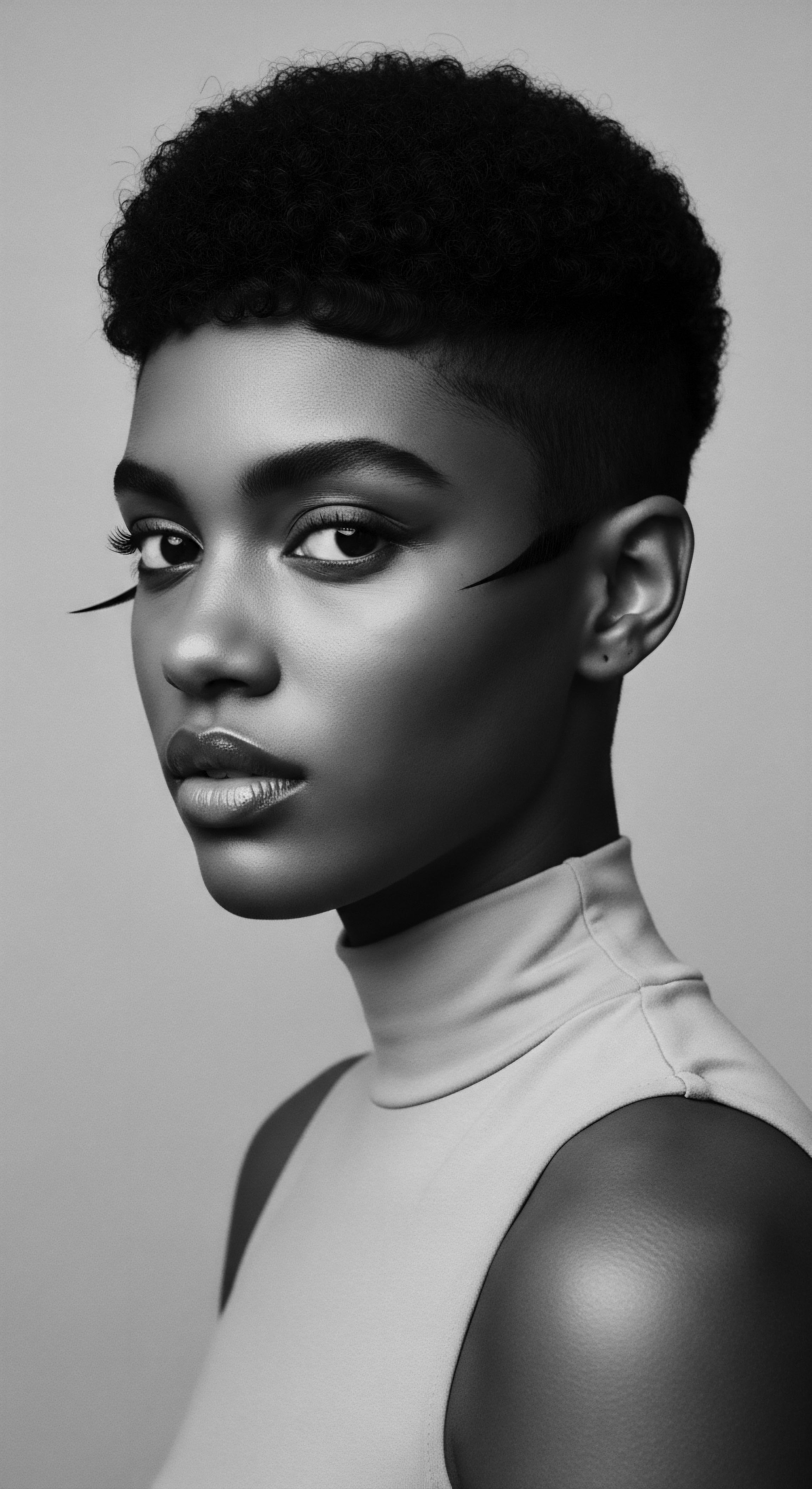
Echoes from the Source ❉ Biomechanical Realities and Ancestral Ingenuity
The biomechanics of coily hair provide a scientific underpinning for the ancestral emphasis on moisture. The tight helical structure, characterized by numerous bends and twists, places inherent stress on the hair shaft. Each turn in the coil creates a potential site for the cuticle, the outermost protective layer of the hair, to lift. When the cuticle is compromised, the inner cortex, responsible for the hair’s strength and elasticity, becomes exposed to environmental elements.
Water, the primary plasticizer of hair, then evaporates with greater ease, leading to a state of dehydration. This desiccation manifests as brittleness, reduced elasticity, increased friction between strands, and ultimately, a higher propensity for breakage.
Ancestral practices, though lacking modern microscopic tools, developed sophisticated responses to these inherent challenges. The consistent application of natural oils and butters, often rich in saturated and unsaturated fatty acids, served to lubricate the hair shaft, smooth the cuticle, and create an occlusive barrier. This approach provided what contemporary science might term “topical nutrition,” directly addressing the hair’s need for external emollients to compensate for its natural vulnerability to moisture loss. For instance, the widespread use of Shea Butter (Vitellaria paradoxa) across West Africa is a testament to this deep understanding.
An ethnobotanical study conducted in Northern Ghana found Shea butter to be the most frequently utilized plant for both skin smoothening and enhancing hair growth, underscoring its historical and continued significance in moisture retention and overall hair health (ResearchGate, 2024). This illustrates a convergence of traditional knowledge and empirical observation regarding the plant’s efficacy in maintaining hair’s pliable state.

The Tender Thread ❉ Cultural Semiotics of Moisture Care
Beyond its biological necessity, Coily Hair Moisture holds profound cultural and semiotic significance within Black and mixed-race hair experiences. The consistent dedication to moisture care is not merely a regimen for health; it is an act of cultural preservation, a connection to ancestral practices, and a statement of identity. Sybille Rosado’s ethnographic research highlights that the similarity in hairstyles and hair grooming practices observed among diasporic Africans today reveals tangible connections to sub-Saharan Africa. She asserts that the maintenance of hair grooming practices and the aesthetics associated with African hair throughout the diaspora possess significant anthropological relevance, given the enduring socio-cultural role hair plays among Black people (Rosado, 2003, p.
61). This perspective frames moisture retention as an integral component of a larger cultural narrative, a thread linking past and present.
The rituals surrounding Coily Hair Moisture, from communal detangling sessions to the careful application of generational recipes, serve as conduits for transmitting cultural values. These acts reinforce collective memory, celebrate resilience, and counteract historical narratives that sought to diminish the inherent beauty of textured hair. The meticulous attention to moisture becomes a form of self-affirmation, a reclaiming of agency over one’s body and heritage in the face of societal pressures.
Coily Hair Moisture care is a living dialogue between ancestral wisdom and contemporary self-affirmation.
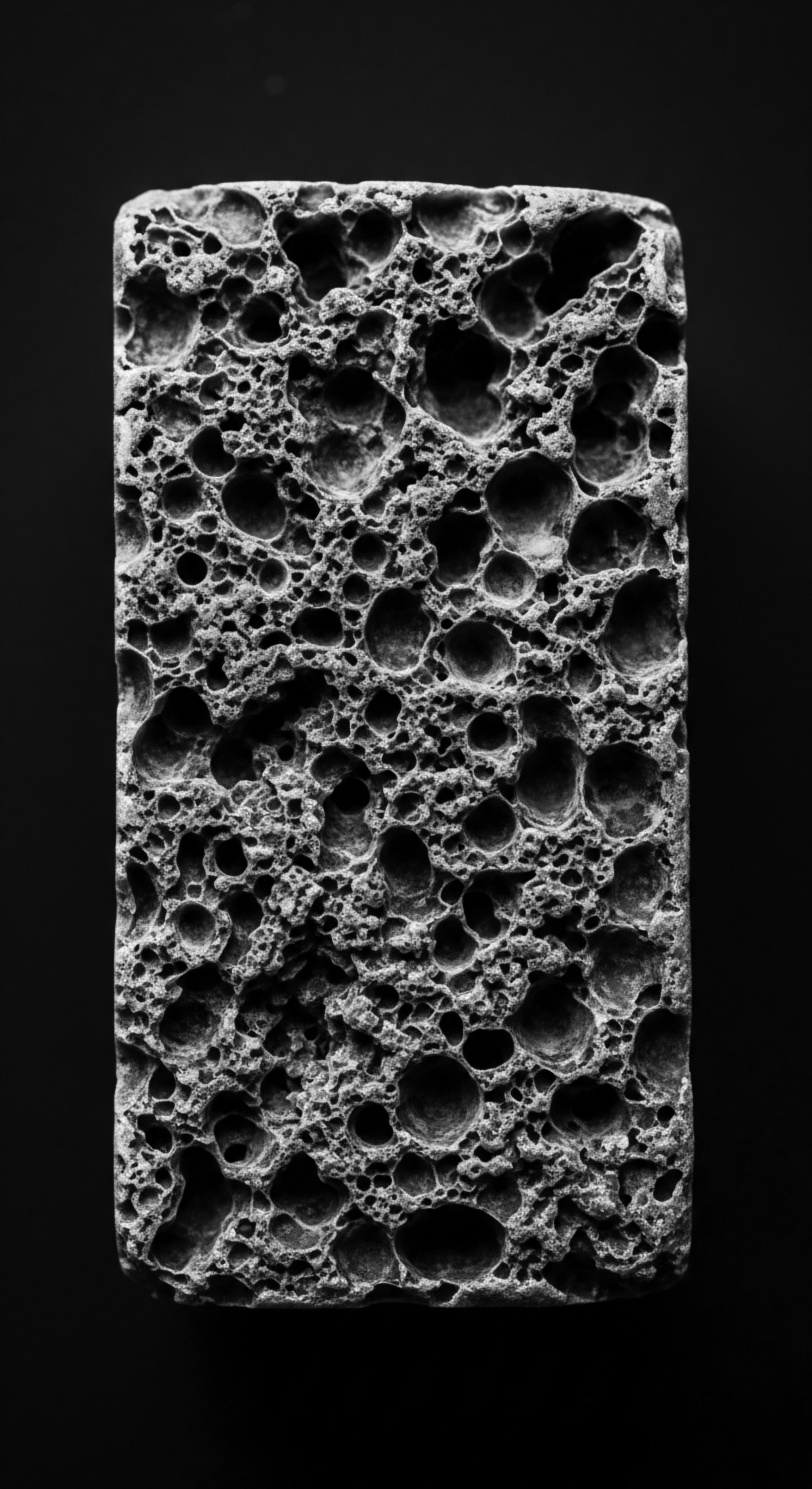
The Unbound Helix ❉ Interconnected Incidences and Long-Term Outcomes
The sustained focus on Coily Hair Moisture has far-reaching consequences, extending beyond individual hair health to influence collective identity and well-being. A consistent moisture regimen, often incorporating protective styles, reduces mechanical stress and breakage, which in turn facilitates length retention. This seemingly simple outcome carries historical weight, as length was often challenging to achieve and maintain due to hair fragility and societal pressures to alter natural texture. The ability to grow and display long, healthy coily hair thus becomes a visible marker of successful care, cultural pride, and defiance against historical norms.
The long-term success of Coily Hair Moisture practices can be examined through the lens of psychological and social impact. When individuals consistently achieve healthy, moisturized coily hair, it can foster a deeper sense of self-acceptance and pride. This positive self-perception, nurtured through consistent care, can ripple outwards, contributing to a broader cultural movement of natural hair affirmation.
The contemporary Natural Hair Movement, for instance, is deeply intertwined with the pursuit of optimal Coily Hair Moisture, as it champions the natural state of textured hair as a symbol of beauty and identity. This movement empowers individuals to align their identity with African heritage and expression (Scholar Commons, 2019).
Moreover, the economic implications of Coily Hair Moisture are significant. The demand for natural, culturally resonant hair products has spurred the growth of Black-owned businesses and a global market for ingredients like Shea butter and various botanical oils. This economic empowerment further reinforces the value of traditional knowledge and sustainable practices, creating a virtuous cycle where heritage-driven care supports community development. The pursuit of Coily Hair Moisture, therefore, is not merely a personal grooming choice; it is a profound act with cascading effects on cultural identity, social empowerment, and economic self-determination.
| Historical Period Pre-Colonial Africa |
| Dominant Moisture Strategy Reliance on local botanicals (shea, palm, moringa oils), communal oiling, protective braiding. |
| Sociocultural Impact Hair as a signifier of status, identity, spiritual connection; collective well-being. |
| Historical Period Slavery & Post-Emancipation |
| Dominant Moisture Strategy Resourcefulness with limited access, adaptation of methods, hidden practices. |
| Sociocultural Impact Survival, resistance, subtle acts of self-preservation amidst oppression. |
| Historical Period 20th Century (Post-Relaxer Era) |
| Dominant Moisture Strategy Emphasis on chemical alteration, often at the expense of natural moisture. |
| Sociocultural Impact Conformity to Eurocentric standards, detachment from natural texture. |
| Historical Period 21st Century (Natural Hair Movement) |
| Dominant Moisture Strategy Re-emphasis on hydration, natural ingredients, protective styles, LOC/LCO methods. |
| Sociocultural Impact Reclamation of identity, cultural pride, community building, economic empowerment. |
| Historical Period The journey of Coily Hair Moisture reflects a continuous struggle for self-definition and the enduring power of ancestral wisdom. |
The ongoing research into the molecular structure of coily hair, its unique lipid composition, and the efficacy of traditional plant-based ingredients continues to deepen this academic understanding. It validates the long-held beliefs of ancestral practitioners, demonstrating how their intuitive methods were, in fact, scientifically sound. The pursuit of Coily Hair Moisture thus stands as a vibrant field of study, one that bridges ethnobotany, dermatology, anthropology, and cultural studies, all converging to honor the resilience and beauty of textured hair heritage.
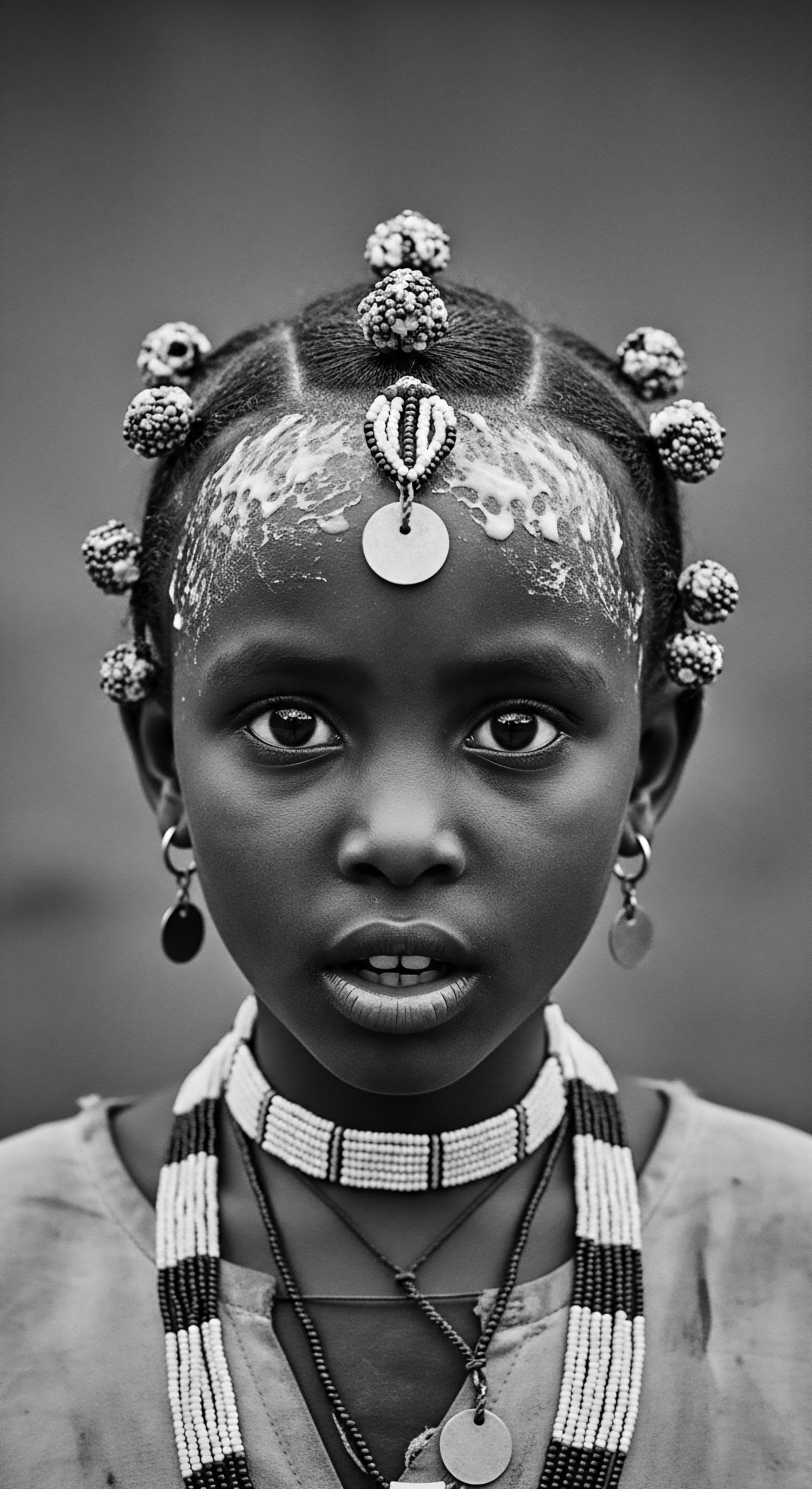
Reflection on the Heritage of Coily Hair Moisture
The exploration of Coily Hair Moisture, as documented within Roothea’s ‘living library,’ unveils a profound narrative that extends far beyond the realm of hair care. It is a resonant chronicle of resilience, adaptation, and enduring cultural wisdom. Each droplet of water, each carefully applied balm, each twist of a protective style echoes the voices of ancestors who, through observation and ingenuity, deciphered the very language of their strands. This journey from elemental biology to profound identity speaks to the ‘Soul of a Strand’ ethos, recognizing hair as a living archive, a tangible link to a rich and complex past.
The very essence of Coily Hair Moisture is a testament to the power of inherited knowledge. It reminds us that long before scientific instruments could dissect the hair shaft, generations possessed an intimate, embodied understanding of what their hair needed to thrive. This wisdom, often communicated through the gentle rhythm of hands braiding and oils massaging, fostered not only physical health but also a deep sense of belonging and cultural continuity. It was a silent, yet powerful, act of preserving heritage in the face of adversity.
Coily Hair Moisture is a sacred trust, passed down through generations, embodying resilience and self-love.
As we navigate the contemporary landscape of hair care, the lessons gleaned from this heritage remain critically relevant. The scientific insights we gain today often serve to affirm the efficacy of practices honed over centuries, underscoring the timelessness of ancestral wisdom. The ongoing pursuit of optimal Coily Hair Moisture is thus a deliberate act of honoring lineage, a celebration of the unique beauty of textured hair, and a reaffirmation of identity.
It is a conscious choice to nourish not just the strands, but the spirit they represent—a spirit that has endured, adapted, and continues to flourish. The unbound helix, vibrant and moisturized, stands as a living symbol of an unbroken connection to the source, a testament to the enduring power of heritage.
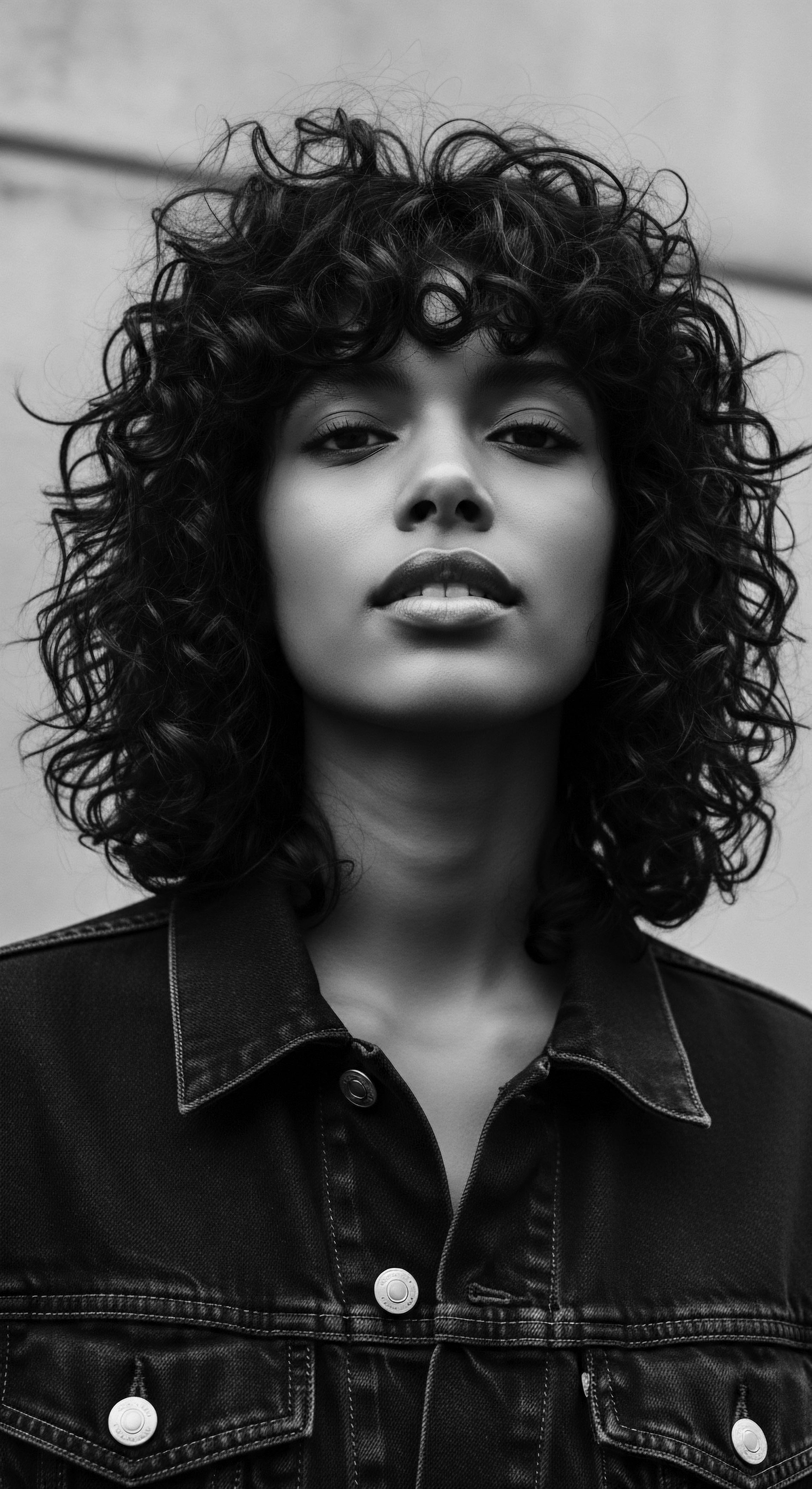
References
- Molamodi, K. (2021). Quantifying the impact of braiding and combing on the integrity of natural African hair. International Journal of Cosmetic Science, 43, 321–331.
- Rosado, S. (2003). Nappy Hair in the Diaspora ❉ Exploring the Cultural Politics of Hair. University of Florida.
- ResearchGate. (2024). Ethnobotany of traditional plant cosmetics utilized by women; A study in Northern Ghana .
- Scholar Commons. (2019). Examining Afrocentricity and Identity Through the Reemergence and Expression of Natural Hair. University of South Florida.
